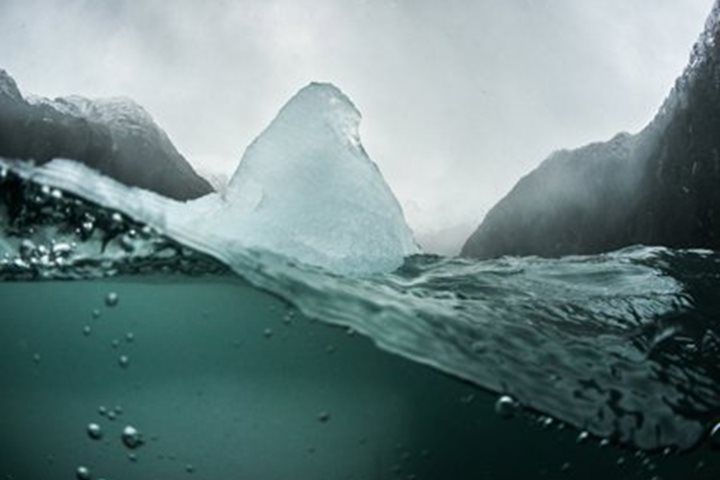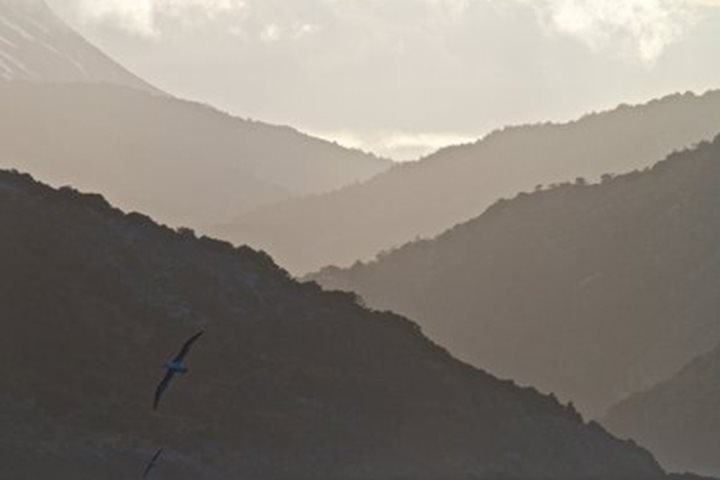Magellan, Thomas Cavendish, Sir Francis Drake, John Davis, Captain FitzRoy and Darwin, to name a few, are some of the navigators and explorers during the last five centuries who have preceded us in sailing the cloudy waters west of the entrance to the Deseado Estuary (Ría).
For a few early risers, the day started with a misty view at the mouth of the ría together with an eerie feeling of alluring exploration starting to awake, fueled by the feeling of unexpected discoveries awaiting behind the curtain of not-very-welcoming weather conditions that blanketed this part of Patagonia. But no matter how many famous explorers and travelers may have come before us, by the time we were in the Zodiacs, surrounded by Chilean (!) and Commerson’s dolphins and a myriad of seabirds, the feeling was that we were the first to ever sail these waters! As the weather greatly improved over the morning, crisscrossing groups of excited visitors met briefly on the docked National Geographic Explorer to refresh and share the experiences of the places and wonders they had just seen.
The options included a phenomenal maze of islands and reddish volcanic cliffs that presented us with the early-season breeding attempts of red-legged, rock, imperial and neotropic cormorants, very aware of the presence of the predatory dolphin and kelp gulls which in turn, were searching for a meal for their own chicks. Skilled boat maneuvering got us in close proximity to these uncanny, approachable birds and some South American sea lions in the process of defining territorial claims and enticing females to their hard-won patch of rock. The spring is in full swing in this part of the world, and the Patagonian infamous “roaring forties” that usually dominate the season gave us a long break to enjoy this hidden jewel on the Atlantic coast.
The now-familiar dusty roads brought us to the Darwin Lookout, a remarkable viewpoint of the estuary and the surrounding lands, where Darwin spent some of his exploring times in Patagonian surroundings. As if the natural wonders had not left us satisfied, a visit to the neatly organized train station, recently recovered from it derelict state, and the Swift Museum, holding treasures from a sunken ship of centuries past, brought us back to the hardships those early explorers must have endured to discover and survey this long-gone river, now inundated by the waters of the mighty South Atlantic ocean, to which we sail on at the very end of the day.







